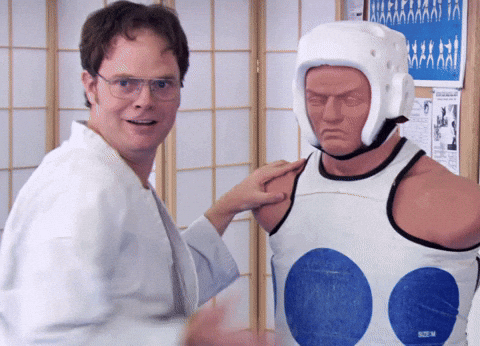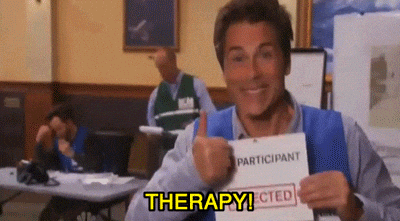Prosopagnosia: Understanding Face Blindness
#TalkNerdyToMe® Staff Writer
Prosopagnosia exists as a neurological disorder which people call face blindness. The condition makes it impossible for people to identify faces including those of their family members and closest friends. The following article explores prosopagnosia explanation includes its definition and its genetic origins and its occurrence rate in society.
What is Prosopagnosia?
Definition of Face Blindness
People who have prosopagnosia cannot identify faces which makes it difficult for them to recognize their family members and friends. People with prosopagnosia face challenges when trying to identify familiar faces which sometimes extends to recognizing people they encounter daily. The extent of facial recognition impairment varies between people with prosopagnosia because some experience minor difficulties while others become completely unable to identify faces. The medical term "face blindness" exists as a synonym for this condition.
Neurological Basis of Prosopagnosia
The fusiform gyrus contains the fusiform face area (FFA) which serves as the main location for face recognition processing in the brain. Brain injuries that affect these specific areas will result in acquired prosopagnosia. Research in neurology shows that the fusiform gyrus contains a specific area called the fusiform face area (FFA) which is essential for face recognition. The fusiform face area (FFA) located in the temporal and occipital lobes plays a vital role in face recognition. Brain damage or lesions in these areas result in acquired prosopagnosia which causes face recognition loss after brain injuries or encephalitis or Alzheimer’s disease.
Prevalence and Demographics
Research indicates that face blindness affects approximately 2% of the total population. The development of prosopagnosia without brain injury exists as a genetic condition which scientists call congenital prosopagnosia. Research indicates that face blindness affects 2% of the population. The development of acquired prosopagnosia occurs through brain damage but congenital prosopagnosia emerges without brain injury. The genetic nature of congenital prosopagnosia or developmental prosopagnosia becomes evident because it affects multiple generations of families. The Cambridge Face Memory Test functions as a diagnostic tool for this condition. People who have face blindness learn different methods to identify their acquaintances.
Causes of Prosopagnosia
Genetic Factors
The development of prosopagnosia as a condition depends on genetic elements which affect people who have this disorder. The condition of congenital prosopagnosia tends to appear in families which indicates that it has a genetic basis. Research indicates that particular genes which control face processing create a predisposition for people to fail at face recognition even when they see familiar faces. Scientists continue their research to discover which specific genes contribute to this condition.
Head Trauma and Its Impact
The development of acquired prosopagnosia occurs through brain injuries which stem from head trauma. The ability to recognize faces becomes impaired when a person suffers damage to their fusiform gyrus or other essential temporal and occipital brain areas. The occurrence of traumatic brain injury leads to different types of agnosia which includes face blindness. People with prosopagnosia experience challenges when trying to identify familiar faces after suffering head injuries.
Other Neurological Disorders
The development of acquired prosopagnosia occurs through brain injuries which stem from various neurological conditions. The brain areas responsible for face processing become affected when patients develop stroke or encephalitis or neurodegenerative diseases such as Alzheimer’s disease. The brain areas responsible for face processing become damaged through these medical conditions which causes people to lose their ability to recognize faces. People who develop prosopagnosia because of these medical conditions will experience worsening difficulties with face recognition. The neurological disorder affects how people recognize faces.
Symptoms and Diagnosis
Recognizing Signs of Face Blindness
The identification of face blindness symptoms leads to successful medical diagnosis. People with prosopagnosia need to use additional identification methods because they struggle to identify familiar faces. People with prosopagnosia need to use additional identification methods because they struggle to recognize faces. The extent of face recognition difficulties varies between people because some struggle only with unknown faces but others cannot identify any faces including those of their family members. The effects of prosopagnosia reach beyond basic facial identification abilities.Diagnostic Tests and Procedures
The Cambridge Face Memory Test functions as a standard assessment tool to measure human face recognition abilities. The diagnosis of prosopagnosia requires multiple tests which evaluate facial recognition capabilities. The Cambridge Face Memory Test functions as a standard assessment tool to evaluate face recognition abilities in people. The assessment process includes showing familiar face pictures to patients who must identify the individuals. Neurology experts perform MRI scans to study the fusiform gyrus together with temporal and occipital brain regions. The diagnostic process enables face blindness patients to obtain necessary support for their condition.
Differential Diagnosis
The process of differential diagnosis helps medical professionals identify prosopagnosia through its distinction from other facial recognition disorders. The condition known as visual agnosia causes people to struggle with recognizing all objects instead of just faces. The symptoms of face blindness can appear in people who have problems with attention or memory or visual acuity. The distinction between apperceptive prosopagnosia and associative prosopagnosia requires equal attention during diagnosis. A complete neurological assessment stands as the essential method to establish an accurate diagnosis of prosopagnosia. A complete neurological assessment enables doctors to diagnose prosopagnosia accurately so patients can receive appropriate medical care.
Treatment and Coping Strategies
Therapeutic Approaches
The current medical understanding indicates that prosopagnosia lacks a treatment but face recognition training together with compensatory methods help patients control their symptoms. The current medical understanding shows that prosopagnosia has no treatment but multiple therapeutic methods exist to help patients control their symptoms. The training program for face recognition helps people learn to identify faces through their facial characteristics and expression patterns. People with face blindness learn to use distinctive characteristics such as hair style and clothing and voice to identify others. The therapeutic methods work to enhance life quality for people who have face blindness.
Supportive Strategies for Daily Life
People who need help with face recognition can use both contextual information and technological tools. People who know about the condition through close relationships will provide better support to those with prosopagnosia. People with prosopagnosia need to develop daily life strategies which help them handle social and work environments. People who know their location and expected encounters can better recognize faces. Face recognition technology through mobile applications helps people identify people in their environment. People who know about prosopagnosia through their close relationships will provide better support to those who have it. The strategies help people manage their difficulties with recognizing familiar faces.
Resources and Support Groups
People with prosopagnosia can connect with others through support groups and online forums to share their experiences and find emotional support. People who live with prosopagnosia need to access support groups and resources for their condition. The platform enables members to exchange their experiences and learn about coping methods and receive emotional backing. Online communities together with discussion forums provide members with access to additional resources and knowledge about face blindness and its related challenges. The combination of educational materials with advocacy organizations works to increase public understanding of prosopagnosia. People with prosopagnosia can find support through these available resources.
Living with Prosopagnosia
Personal Stories and Experiences
People who live with prosopagnosia share their everyday experiences through personal accounts which provide valuable insights. People with prosopagnosia describe their daily battles with social interactions and their efforts to build relationships and maintain their personal identity. The personal accounts demonstrate different methods people use to handle face blindness while demonstrating the need for understanding and compassion. The inability to recognize familiar faces leads to deep emotional consequences for people with this condition.
Impact on Social Interactions
The condition of prosopagnosia creates major social challenges which produce anxiety and social withdrawal in affected individuals. The social effects of prosopagnosia on human relationships result in anxiety and social withdrawal and feelings of embarrassment. People who struggle to identify their acquaintances and colleagues and friends experience social conflicts which damage their relationships. People with prosopagnosia use avoidance techniques to reduce their social distress. The education of others about face blindness along with increased awareness efforts will create an environment which supports people with prosopagnosia.Future Research Directions
Research in the future will explore the neural mechanisms of face perception to create better treatment methods. The research on prosopagnosia focuses on two main objectives which include understanding face processing in the brain and creating better treatment approaches. Scientists investigate genetic elements and brain imaging methods and therapeutic approaches which could enhance facial identification skills. The fusiform gyrus and additional brain areas that process facial recognition need. Scientists need to conduct additional studies to determine the complete extent of prosopagnosia. further scientific study. The development of new technology including artificial intelligence creates potential opportunities for creating assistive devices - which would be a big win for all affected.



